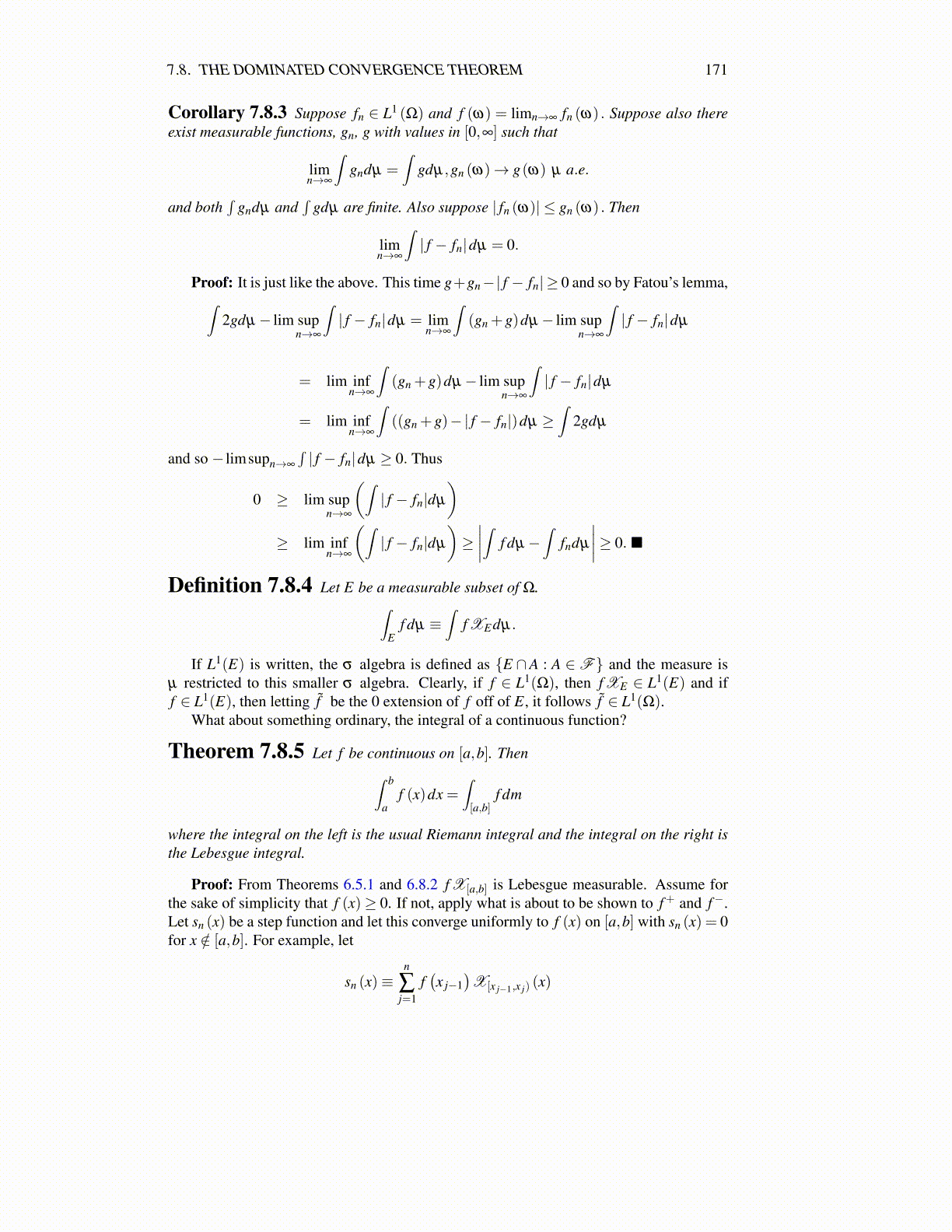
7.8. THE DOMINATED CONVERGENCE THEOREM 171
Corollary 7.8.3 Suppose fn ∈ L1 (Ω) and f (ω) = limn→∞ fn (ω) . Suppose also thereexist measurable functions, gn, g with values in [0,∞] such that
limn→∞
∫gndµ =
∫gdµ,gn (ω)→ g(ω) µ a.e.
and both∫
gndµ and∫
gdµ are finite. Also suppose | fn (ω)| ≤ gn (ω) . Then
limn→∞
∫| f − fn|dµ = 0.
Proof: It is just like the above. This time g+gn−| f − fn| ≥ 0 and so by Fatou’s lemma,∫2gdµ− lim sup
n→∞
∫| f − fn|dµ = lim
n→∞
∫(gn +g)dµ− lim sup
n→∞
∫| f − fn|dµ
= lim infn→∞
∫(gn +g)dµ− lim sup
n→∞
∫| f − fn|dµ
= lim infn→∞
∫((gn +g)−| f − fn|)dµ ≥
∫2gdµ
and so − limsupn→∞
∫| f − fn|dµ ≥ 0. Thus
0 ≥ lim supn→∞
(∫| f − fn|dµ
)≥ lim inf
n→∞
(∫| f − fn|dµ
)≥∣∣∣∣∫ f dµ−
∫fndµ
∣∣∣∣≥ 0. ■
Definition 7.8.4 Let E be a measurable subset of Ω.∫E
f dµ ≡∫
f XEdµ.
If L1(E) is written, the σ algebra is defined as {E ∩A : A ∈ F} and the measure isµ restricted to this smaller σ algebra. Clearly, if f ∈ L1(Ω), then f XE ∈ L1(E) and iff ∈ L1(E), then letting f̃ be the 0 extension of f off of E, it follows f̃ ∈ L1(Ω).
What about something ordinary, the integral of a continuous function?
Theorem 7.8.5 Let f be continuous on [a,b]. Then∫ b
af (x)dx =
∫[a,b]
f dm
where the integral on the left is the usual Riemann integral and the integral on the right isthe Lebesgue integral.
Proof: From Theorems 6.5.1 and 6.8.2 f X[a,b] is Lebesgue measurable. Assume forthe sake of simplicity that f (x)≥ 0. If not, apply what is about to be shown to f+ and f−.Let sn (x) be a step function and let this converge uniformly to f (x) on [a,b] with sn (x) = 0for x /∈ [a,b]. For example, let
sn (x)≡n
∑j=1
f(x j−1
)X[x j−1,x j) (x)